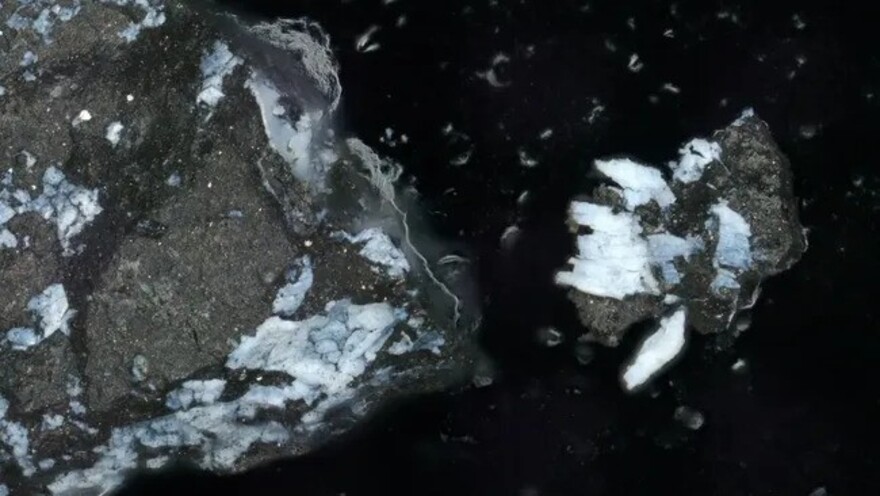Scientists who study samples brought back to Earth by the OSIRIS-REx spacecraft have made a sensational discovery. They found phosphates in its composition that suggest the asteroid Bennu, from which they were sampled, may once have been part of an oceanic world.

Unique asteroid samples
On September 24, 2023, NASA’s OSIRIS-REx spacecraft dropped a capsule containing intact carbon regolith collected from the near-Earth asteroid Bennu back to Earth. These samples were obtained after the probe made an impressive seven-year journey through the Solar System.
Since the arrival of these fragments of space rock (about 120 grams of sample to be exact), scientists eagerly awaited them, which could tell us about the kind of molecules contained inside Bennu. They hope to find clues about the history of our Solar System, as Bennu may have been preserved from the time when all celestial bodies formed, as well as prebiotic molecules that could provide insight into the origin of life on Earth. Many experts speculate that these samples may contain seeds of other important ingredients, such as water, that could have contributed to Earth’s habitability if they also ended up on our planet.
While initial studies actually showed that the OSIRIS-REx samples contained signatures of carbon and water, perhaps even more impressive is the team’s recent and unexpected discovery of magnesium-sodium phosphate. It is an ionic compound consisting of a magnesium cation (Mg2+) and a phosphate anion (PO43-).
Asteroid Bennu’s aquatic past
On Earth, magnesium-sodium phosphate can be found in certain minerals and geologic formations, as well as in living organisms, where it is involved in various biochemical processes and is a component of bones and teeth. However, according to a NASA press release, its presence on Bennu surprised the research team because it was not visible in the OSIRIS-REx probe’s remote sensing data prior to sample collection. The team says its presence “hints that the asteroid may have broken off from a long-extinct, tiny, primitive oceanic world.”
The OSIRIS-REx spacecraft obtained a sample of Bennu regolith on October 20, 2020, using the Touch-and-Go sampling mechanism (TAGSAM), which consists of a specialized sampler head mounted on an articulated arm. Bennu is a small B-type asteroid that belongs to the rare carbon type. “[Bennu] was selected as the mission target in part because telescopic observations indicated a primitive, carbonaceous composition and water-bearing minerals,” the team notes in their paper.
The sample was collected from a site named Nightingale, which is located in Hokioi Crater, an impact site in the northern hemisphere of Bennu that is about 20 meters in diameter.
Further analysis of the samples showed that the predominant component of the regolith is magnesium-bearing phyllosilicates, predominantly serpentine and smectite, rocks that are commonly found on mid-ocean ridges on Earth. Comparing these serpentinites to their terrestrial counterparts provides a better understanding of Bennu’s geologic past.
According to www.space.com


